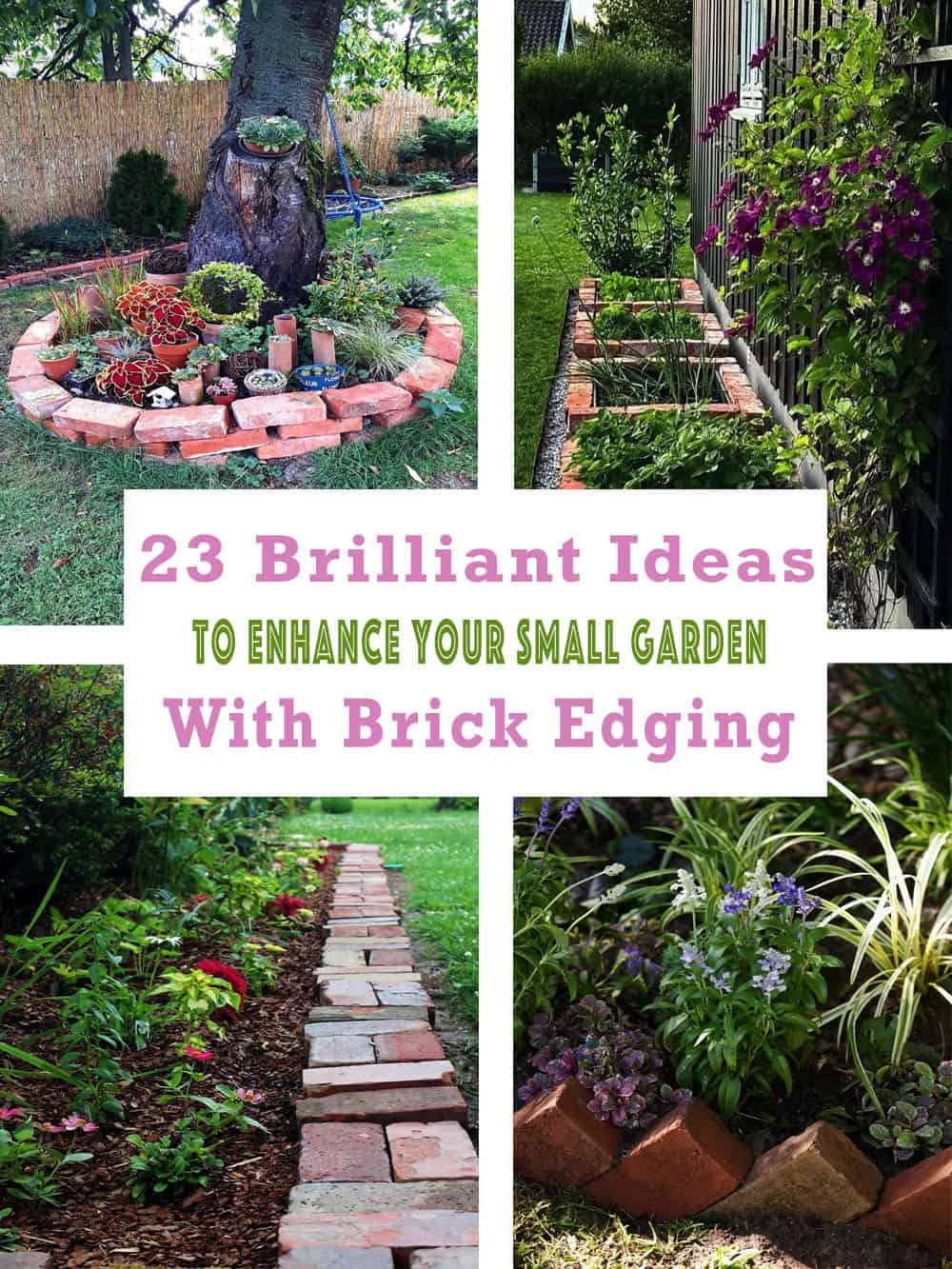
Brick edging for your garden can be very versatile and can be used in pretty much any style of garden. It’s a creative way to enhance your garden’s appeal and add functionality. Whether you are looking to define your flower bed, create a pathway through your garden, add a focal point, or bring in a decorative touch, we have plenty of unique ideas to help you get started.
Whether your garden is formal or whimsical, modern or rustic, these creative ideas can help you define spaces, protect your plantings, and elevate your entire outdoor aesthetic. Get ready to transform your yard into a stunning garden oasis.
Tell Us: Which one of these brick edging ideas do you find most inspiring? Let us know in the Comments below!
1. Half Brick Edging.
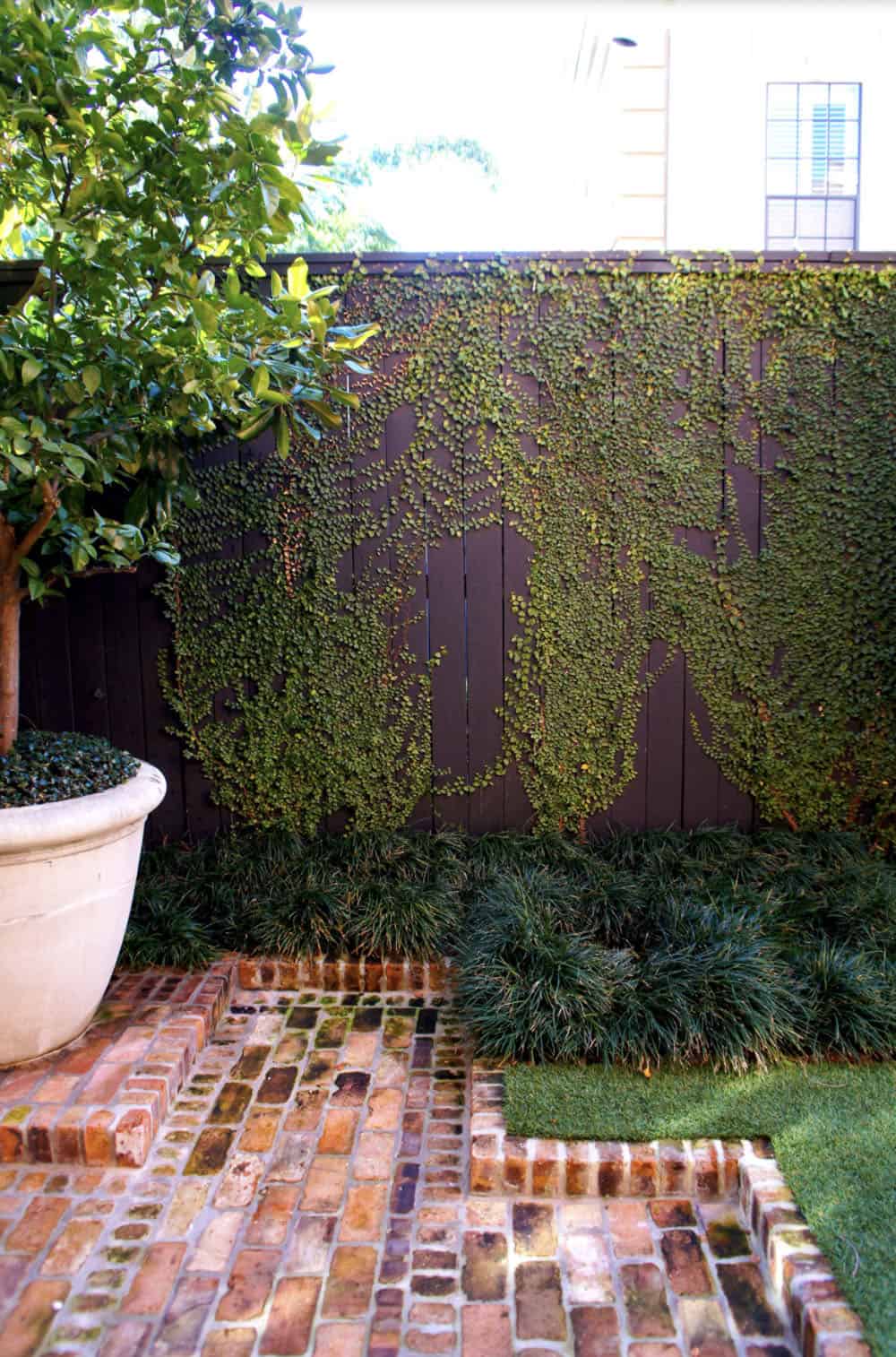
This traditional, European-style home with an English garden has a brick walkway, where the look is carried through with a brick edging called ‘Old Chicago brick’. The patina effect is caused by the brick’s moisture-absorbing qualities, which will continue to develop over time. On the wall is a Creeping Fig, and a citrus tree is planted in the container. The Creeping Fig does well in the shade.
If you live in a hardiness zone 8 or higher, creeping fig plants can be grown outside year-round and can grow more than 20 feet tall. It grows quickly and clings tightly, allowing it to “take the shape” of a fence, column, or home façade. Monkey grass was planted at the base of the fence. It works well because the dark green contrasts nicely with the artificial turf. Also, monkey grass thrives in the shade, so it’s an optimal choice for planting near a fence. (via Lanson B. Jones & Co)
2. Higgledy-Piggledy Garden Edge.

A higgledy-piggledy garden edge is an intentionally irregular, whimsical border that defines the edge of a garden bed in a loose, informal way. It is built using mismatched bricks in a way that feels chaotic rather than symmetrical. The garden is topped off with a thick layer of pine bark mulch. Flowers include zinnias and coleus for a perennial bed. (via Modern June Blog)
3. Potager Garden Edging.
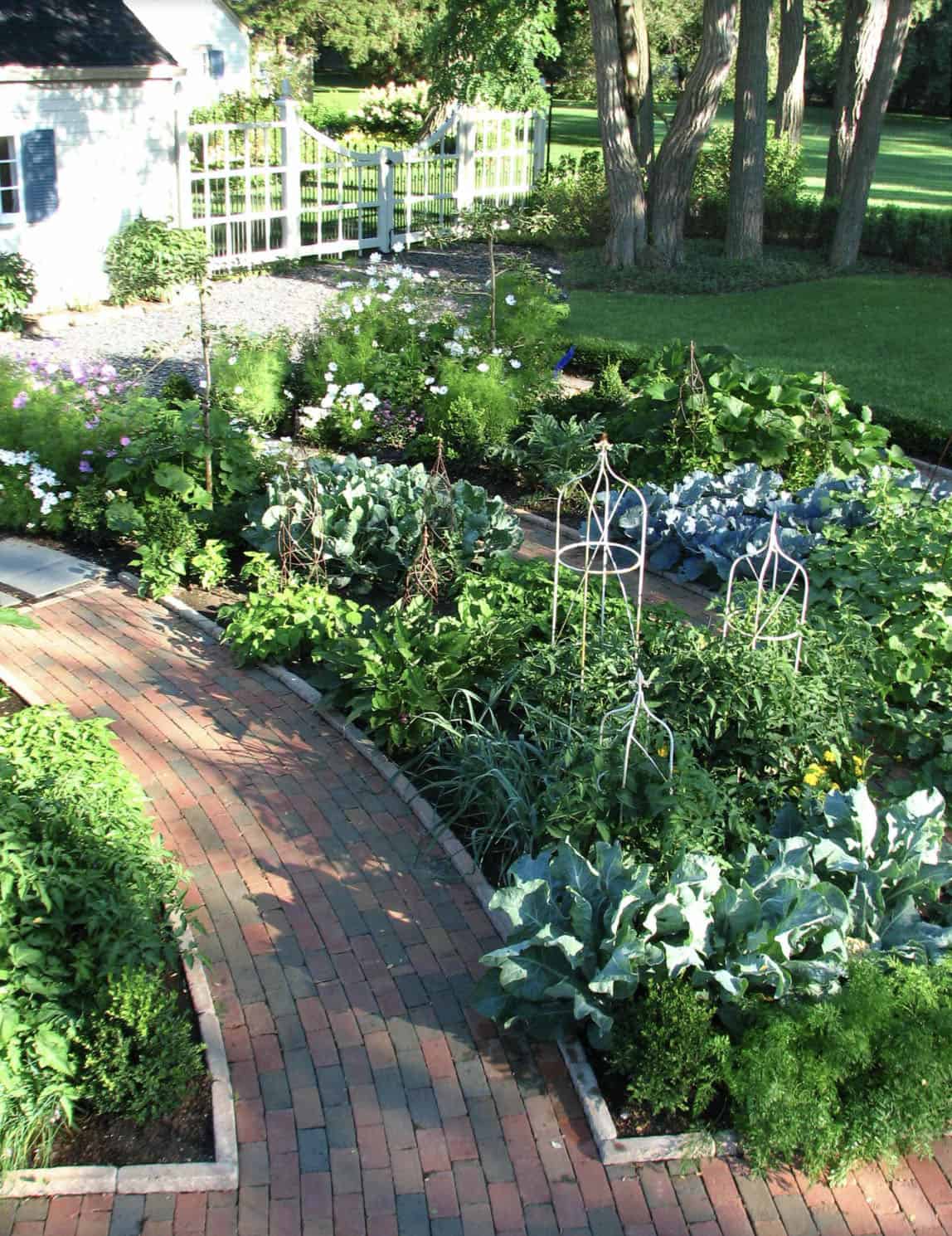
This traditional French-style garden features a variety of fruits, berries, herbs, cuttings, and a vegetable garden. The brick edging is made of reclaimed top (or cap) sections from concrete masonry unit walls. The dimensions are 2″x12″x6″. The brick is both set on and joints swept with sand to provide some drainage in the pathway, as well as not to disturb the native garden soil. The edging helps to keep the bricks in place, but more importantly, it provides a strong line that contrasts in color and texture, reinforcing the radius pattern of the garden spaces. The brick is called the Belcrest 560 by The Belden Brick Company. The tomato cage supports came from Steel Heart in Harvard, Illinois. (via Staab & Olmsted)
4. Curved Brick Edging.

There is a nice transition between the deck and the brick walkway. The brick edging ties everything together. The curved edging of this flower bed is a nominal 4″x8″ concrete paver. It’s a mix of the homeowner’s existing supply and new ones brought in to complete the project. They are slightly larger than a standard clay brick. The plants with pink flowers are called the Pink Knock Out Rose, also known as Rosa x ‘Radcon’. (via Arcadia Gardens)
5. Brick-Edged Pathway.
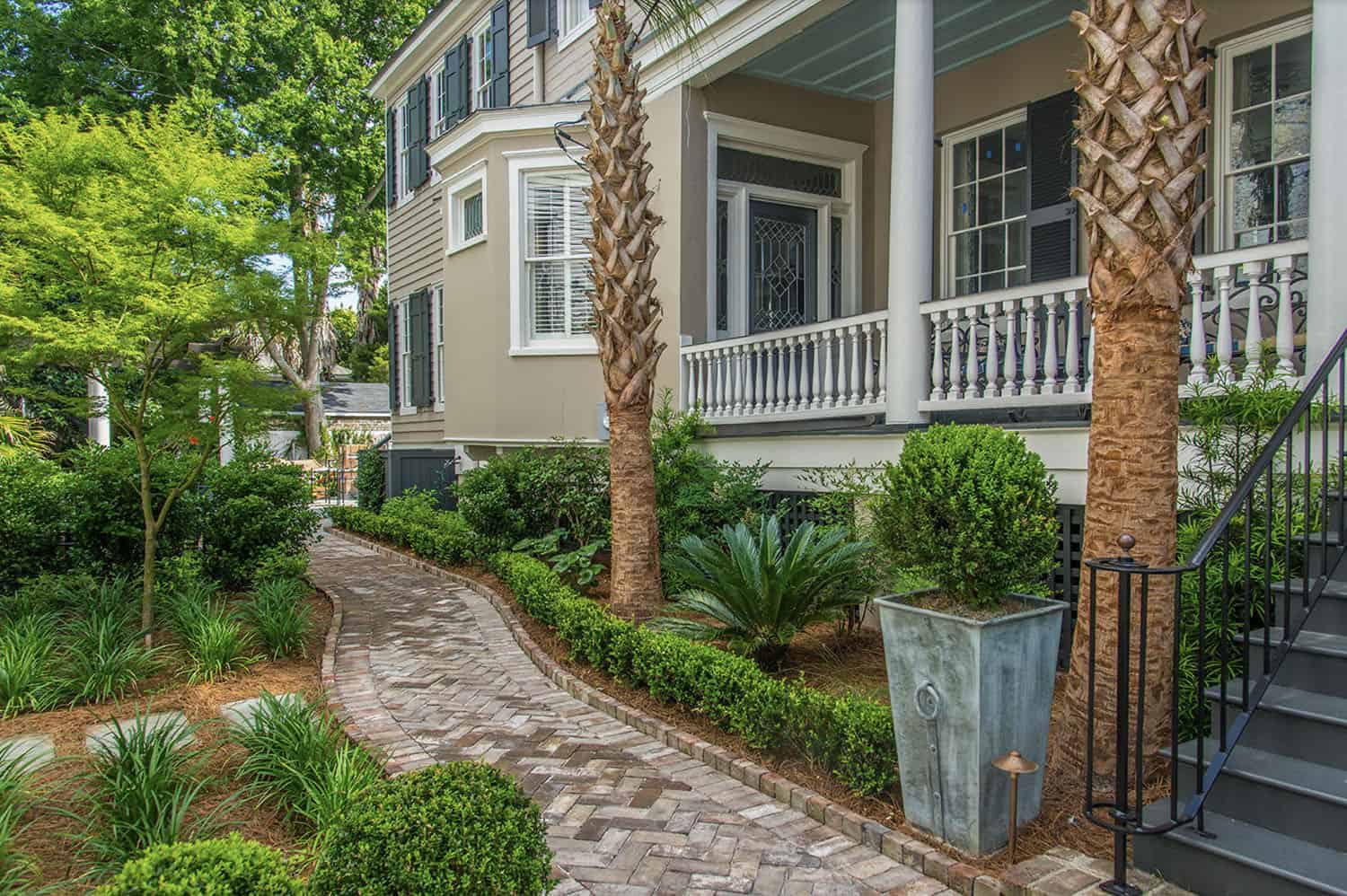
Rich evergreens encompass the pathway leading to the Saltwater Pool Courtyard from the driveway and entryway. Globe Boxwoods stand point for the transition of the landing and the Carolina Brick Pathway. Here, a Herringbone Pattern with a Header border directs you through, as the sailor course edging signifies the strong boundary of the pathway and plant bed. (via Carolina Landscape)
6. Herringbone Brick Pattern.

This brick edging features a diagonal herringbone-style garden border. This design draws the eye and works exceptionally well along pathways. The thick application of the mortar between the rustic bricks brings visual texture to the landscape. (via @sledmere_house / Instagram)
7. Saw-Tooth Brick Garden Edge.

Upcycle old bricks to define the lawn edge and showcase plants. Supplies needed include recycled bricks, pebbles, and various plants. You will also need bagged mortar mix to set the bricks into place. Get the complete DIY how-to at the provided link. (via Sue Ferris / Better Homes and Gardens)
8. Brick Garden Pathway.

In the backyard of a home in Edina, Minnesota, there is beautiful landscaping featuring cobblestone street pavers, a wheel-pattern herb garden, a white picket fence, and clay brick paver walkways. If you already have a brick pathway existing on your property, you can plant a garden bed up against it, making the brick pathway play double duty as a garden border. (via Bachman’s Landscaping & Garden Services)
9. Raised Brick Edging.
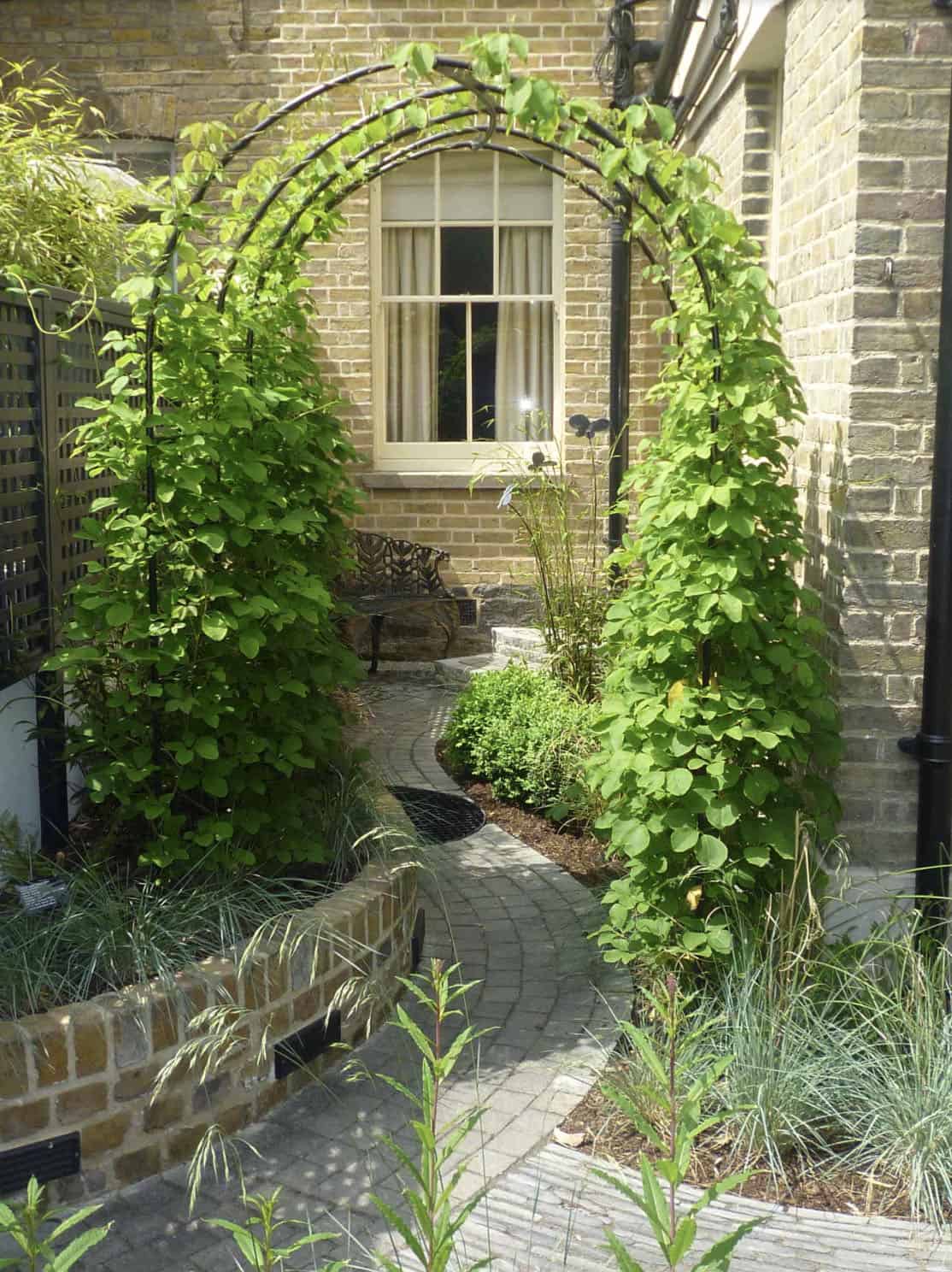
Stack bricks vertically to form a traditional raised brick garden bed. This adds structure and helps manage mulch and soil overflow. A mixture of cottage garden and architectural planting, along with a metal pergola, completes the design. (via Aralia: Innovation in Landscape Design)
10. Angled Brick Edging.

This garden bed features a diagonal upright brick edging with weathered bricks that are partially buried at an angle to form a visually interesting and functional border between a gravel path and a vegetable garden. Use garden tags to label your vegetables for both visual interest and function, making it easy to identify plant varieties. (via @sledmere_house / Instagram)
11. Circular Brick Border.
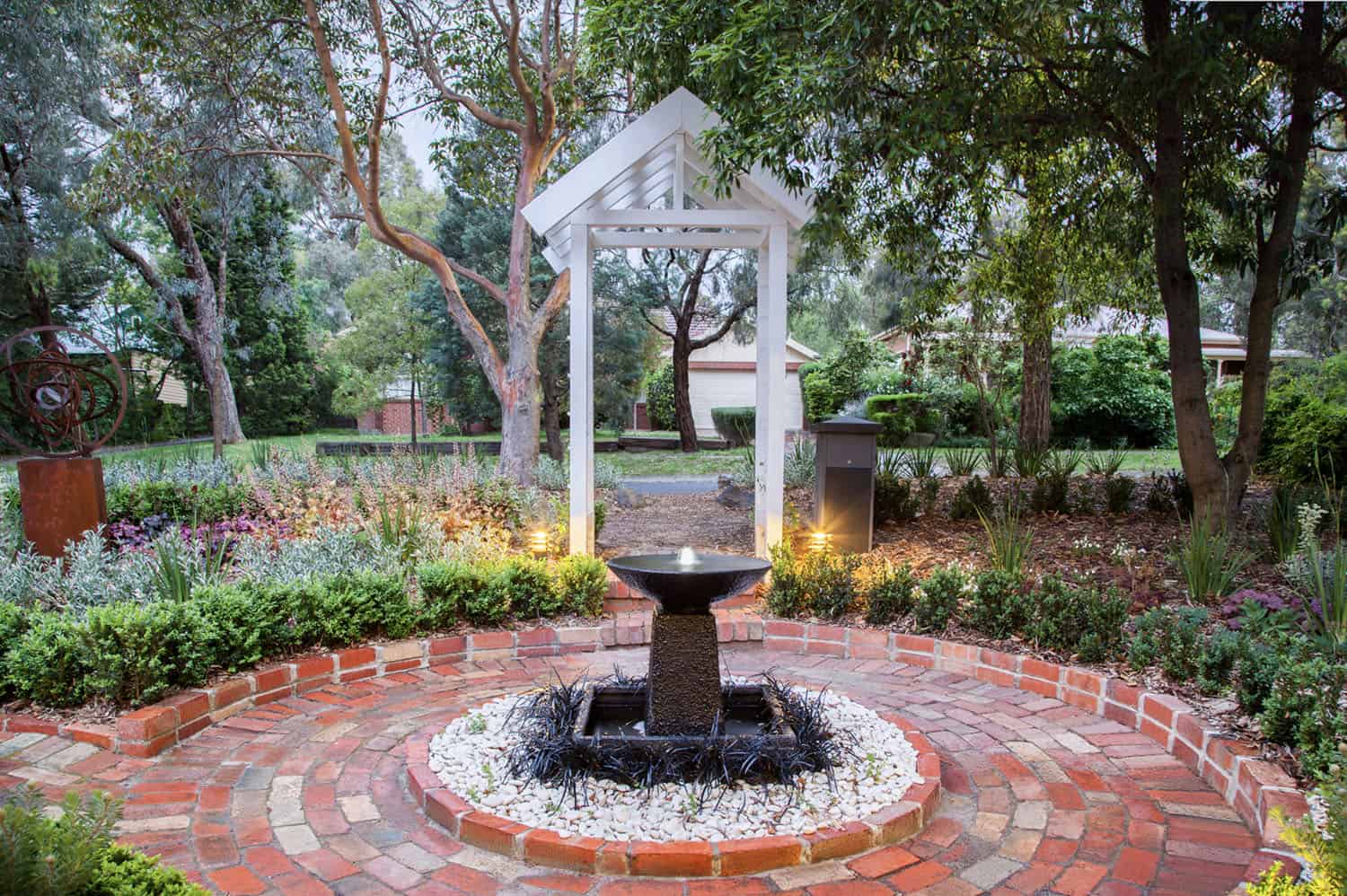
This practical and playful modern cottage garden features an arbour and a quaint water feature as the focal point of the entryway. The brick border helps the water feature to stand out against the curved pathway. The brick also helps to define the border of the garden. (via Inspiring Landscape Solutions by Parveen Dhaliwal)
12. Brick Edging Around Raised Beds.
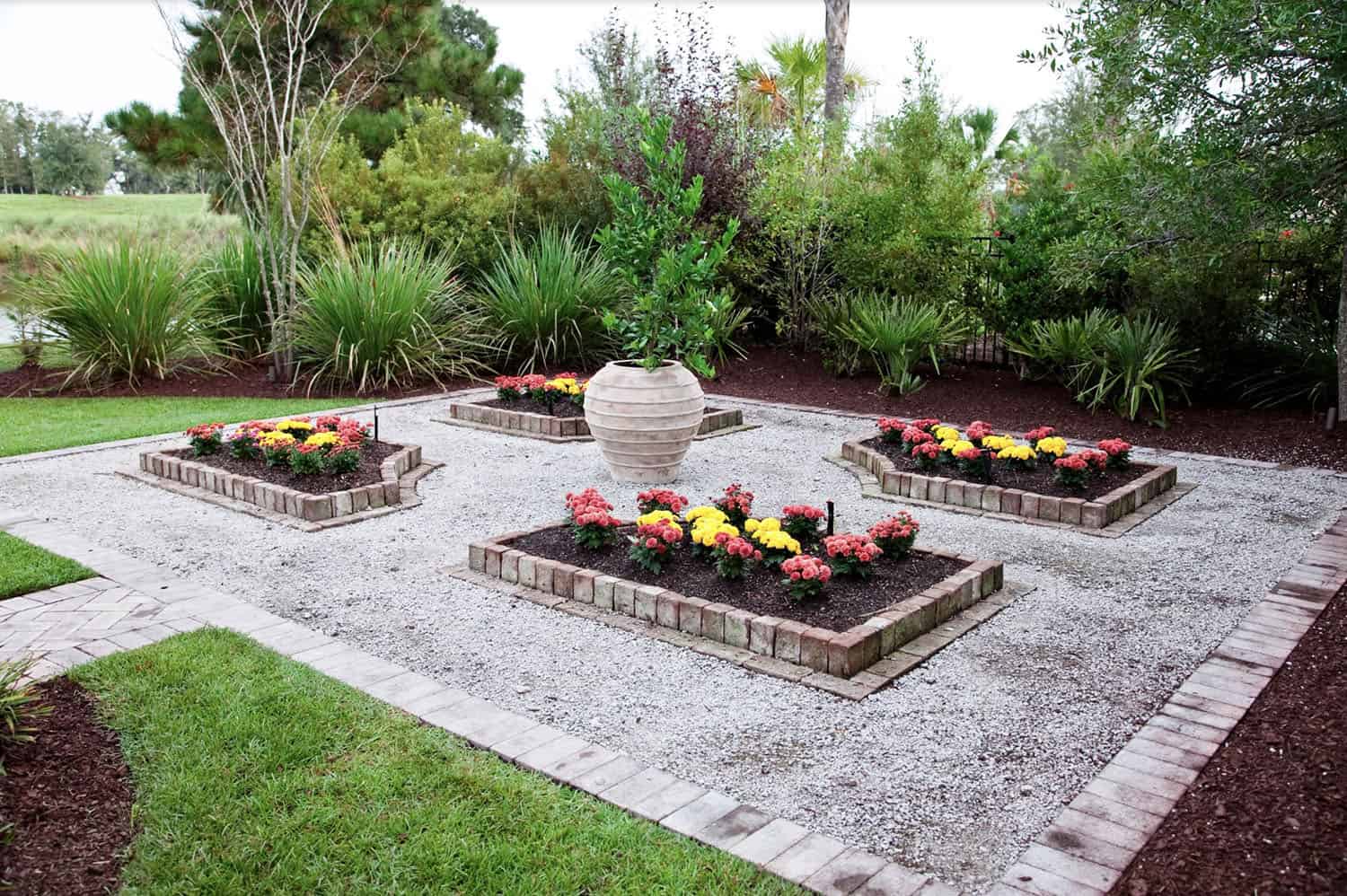
Use bricks to form borders around raised flower beds for a cohesive and finished look. The pink and yellow flowers are Chrysanthemums, also known as mums, which can be found in various shades, including russet, purple, deep red, soft pink, or glowing gold. Mums are easy to grow in raised beds or borders, as they thrive in well-drained soil and adequate sunlight, making them a low-maintenance choice, especially for vibrant fall color. Plant your mums in the spring so they are well-established before the onset of winter. Be sure to prune your plants regularly to keep them healthy and hardy. (via D.I.G. Landscape)
13. Recycled Brick Edging.
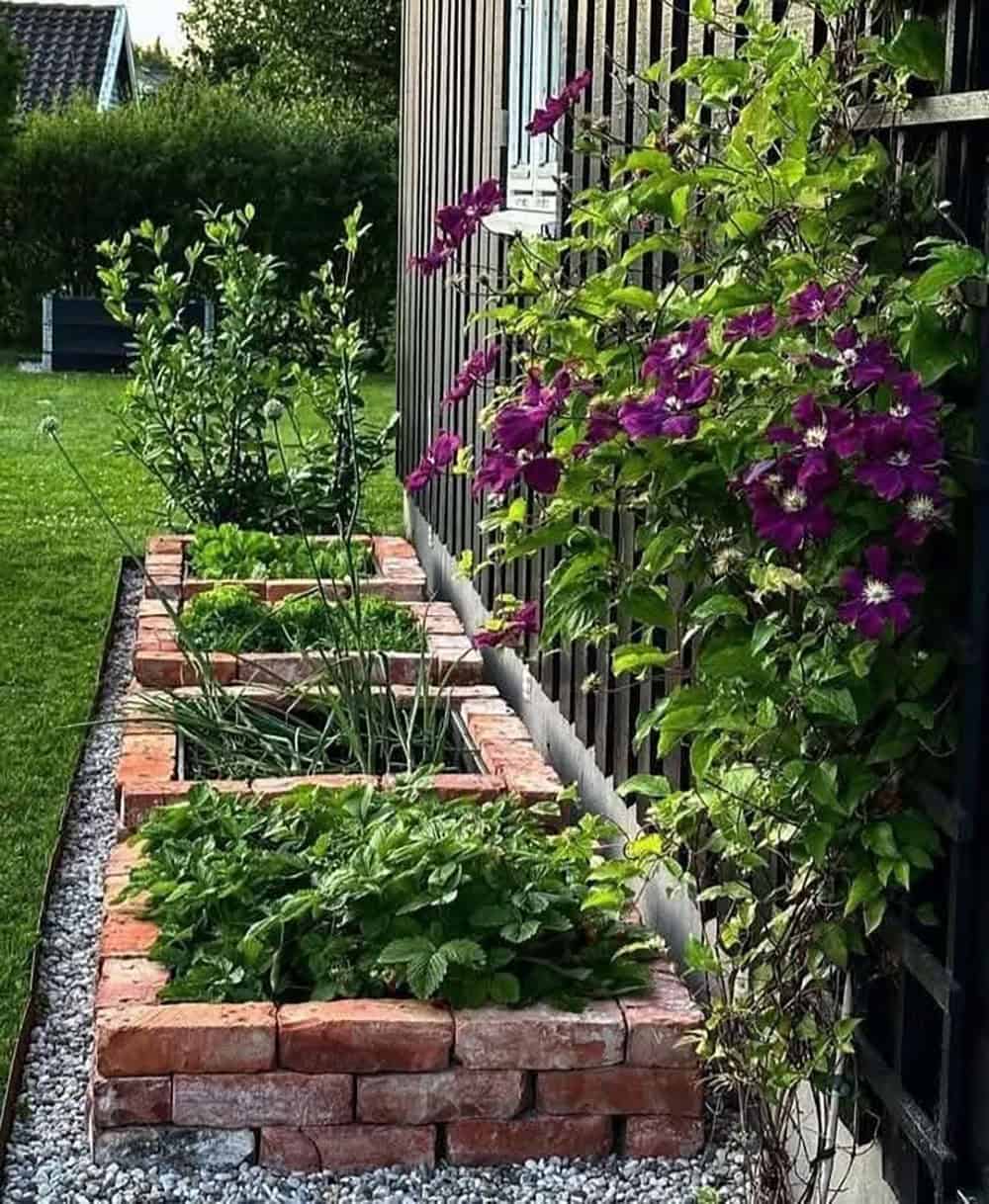
Create these DIY raised garden beds using recycled red bricks with gravel for a tidy, drainage-friendly border. The contrast in textures adds a contemporary look. (via Blooming Gardens / Facebook)
14. Brick Edging for Herb Gardens.
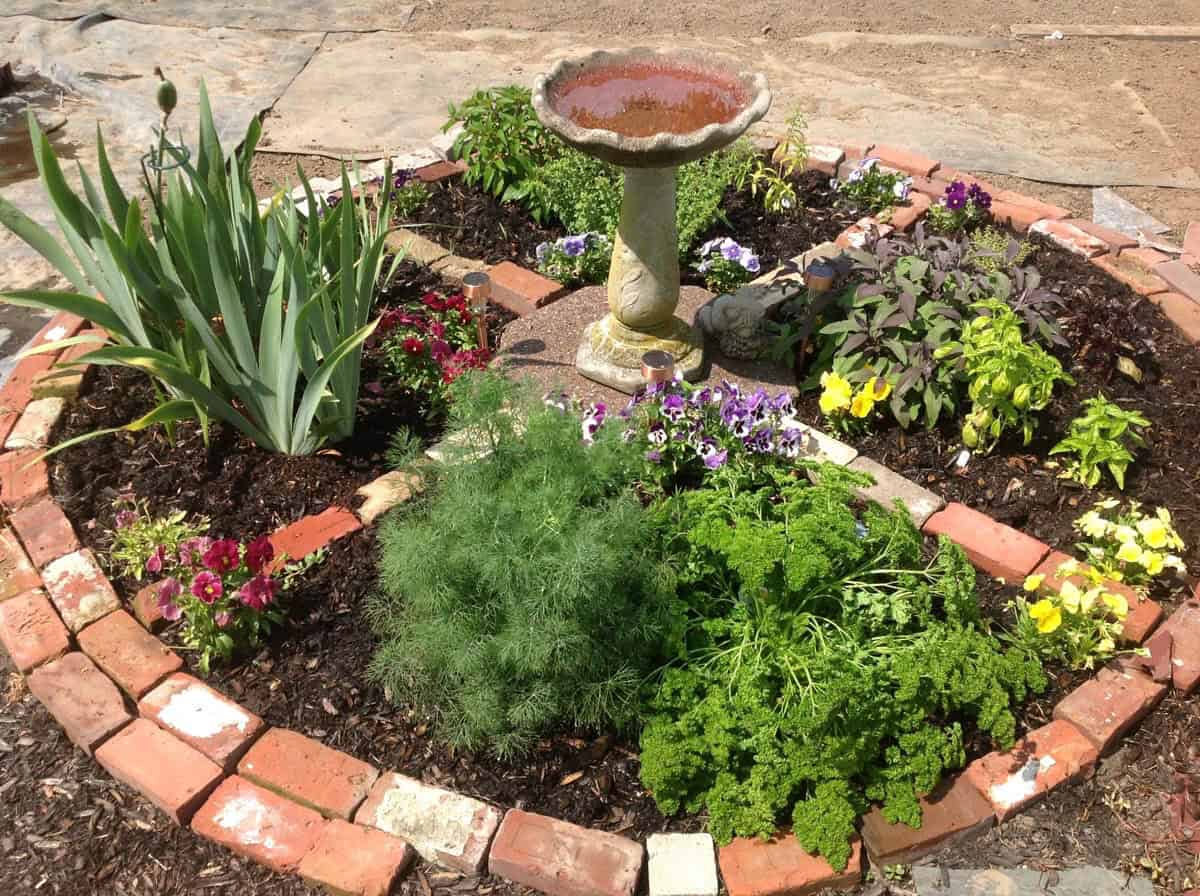
If you love picking fresh herbs from the garden, then this herb wheel is the perfect implementation for your garden. Use bricks to section off the herb garden into neat, labeled zones. It’s both practical and attractive. (via Shelle Walker/ Pinterest)
15. Wavy Brick Edging.
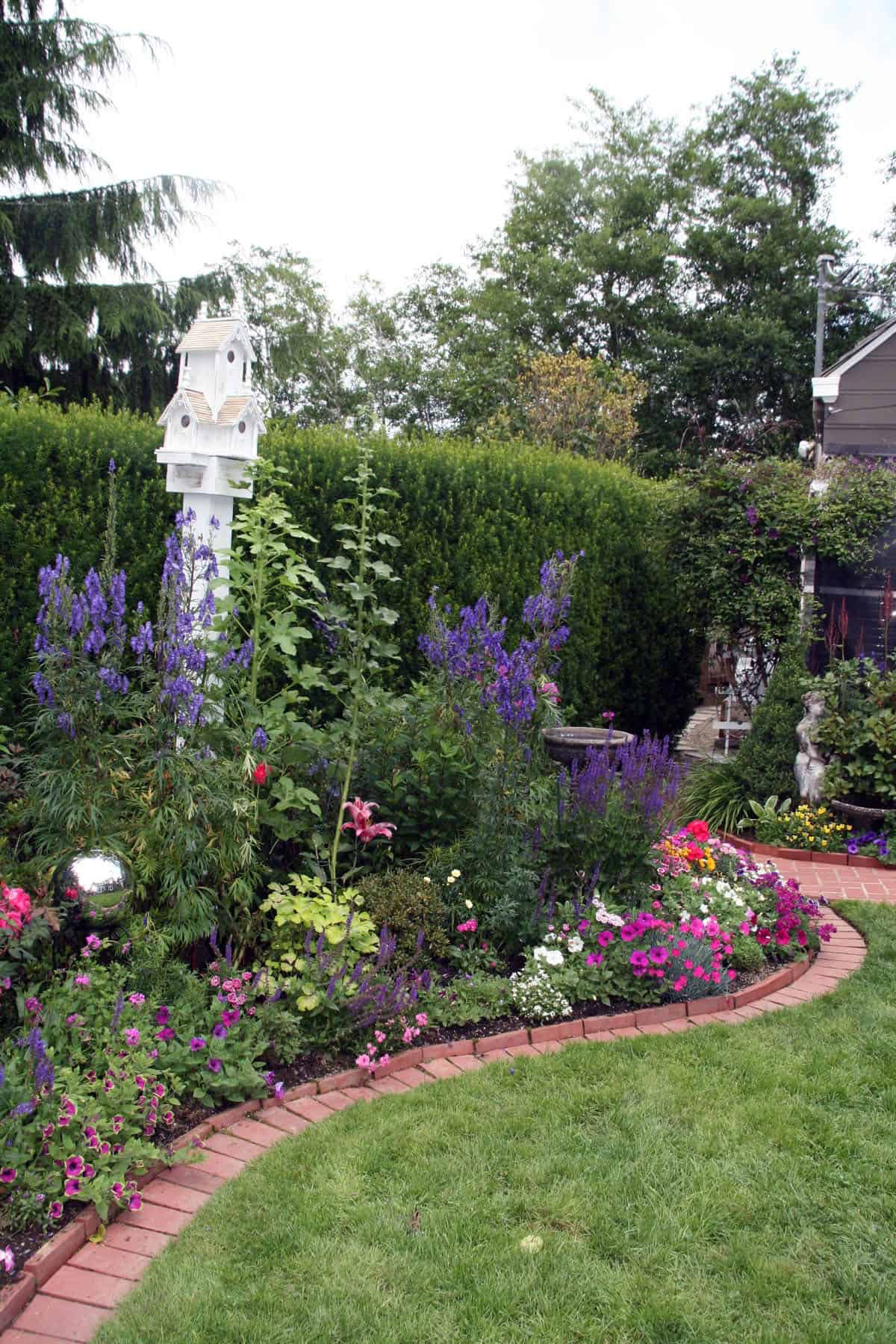
Instead of a straight line, lay bricks in a gentle curve with an abundance of colorful flowers and greenery. A large birdhouse and a bird bath are perfect for inviting birds to visit, adding movement, sound, and life to your garden. (via Susan Larson/ Pinterest)
16. Brick Edging Around A Tree.

Create visual interest around a tree using red bricks to create a garden border. The bricks will help to define the space while protecting the trunk and enhancing curb appeal. Either plant a flower bed or add potted plants that will enjoy natural shading from the tree. (via Justyna / Pinterest)
17. Red Brick Garden.
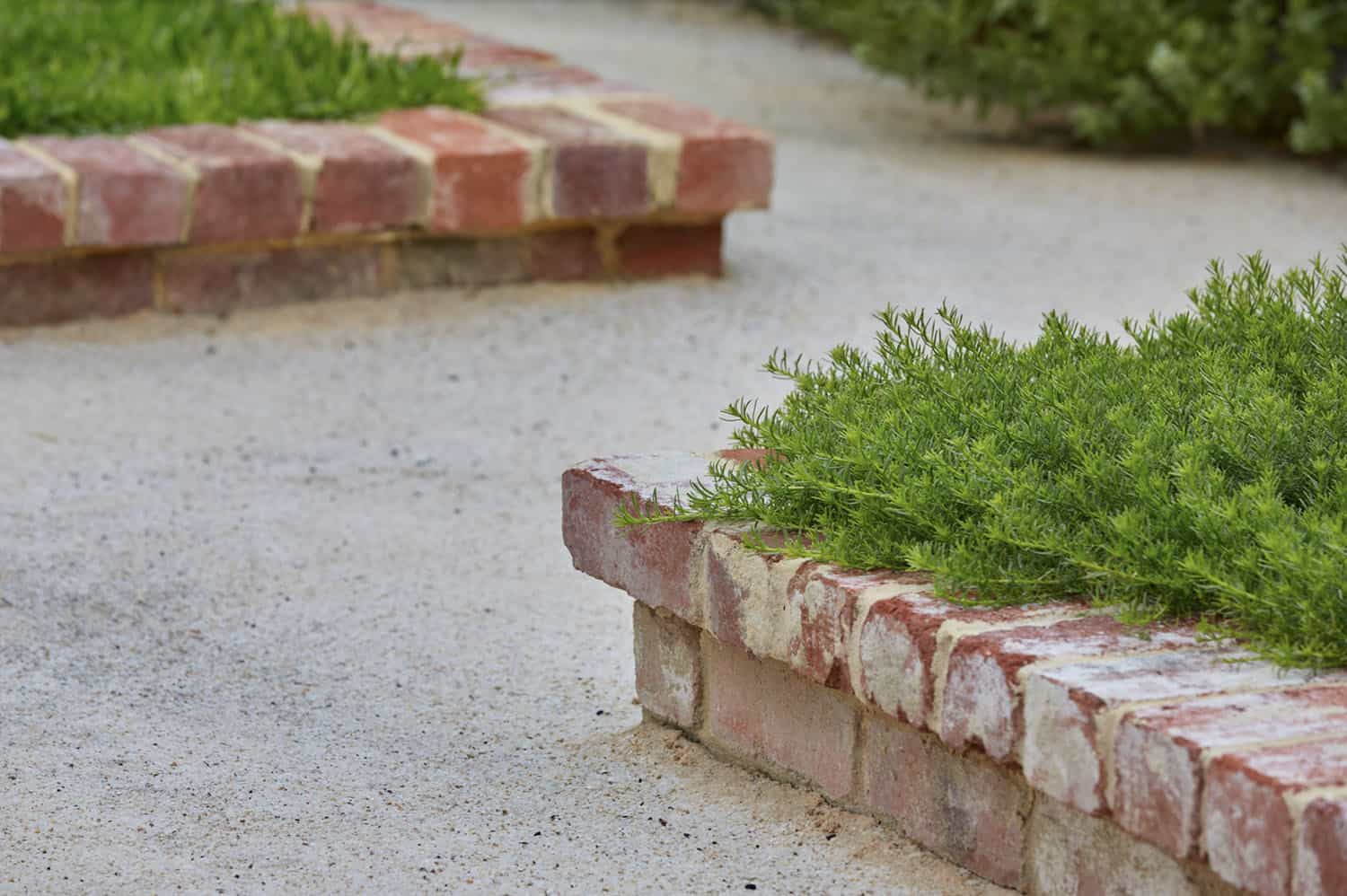
These raised, recycled brick garden beds feature lush green foliage, offering a timeless look that complements both traditional and contemporary gardens. (via Seedesign Studio)
18. Stacked Brick Edging.
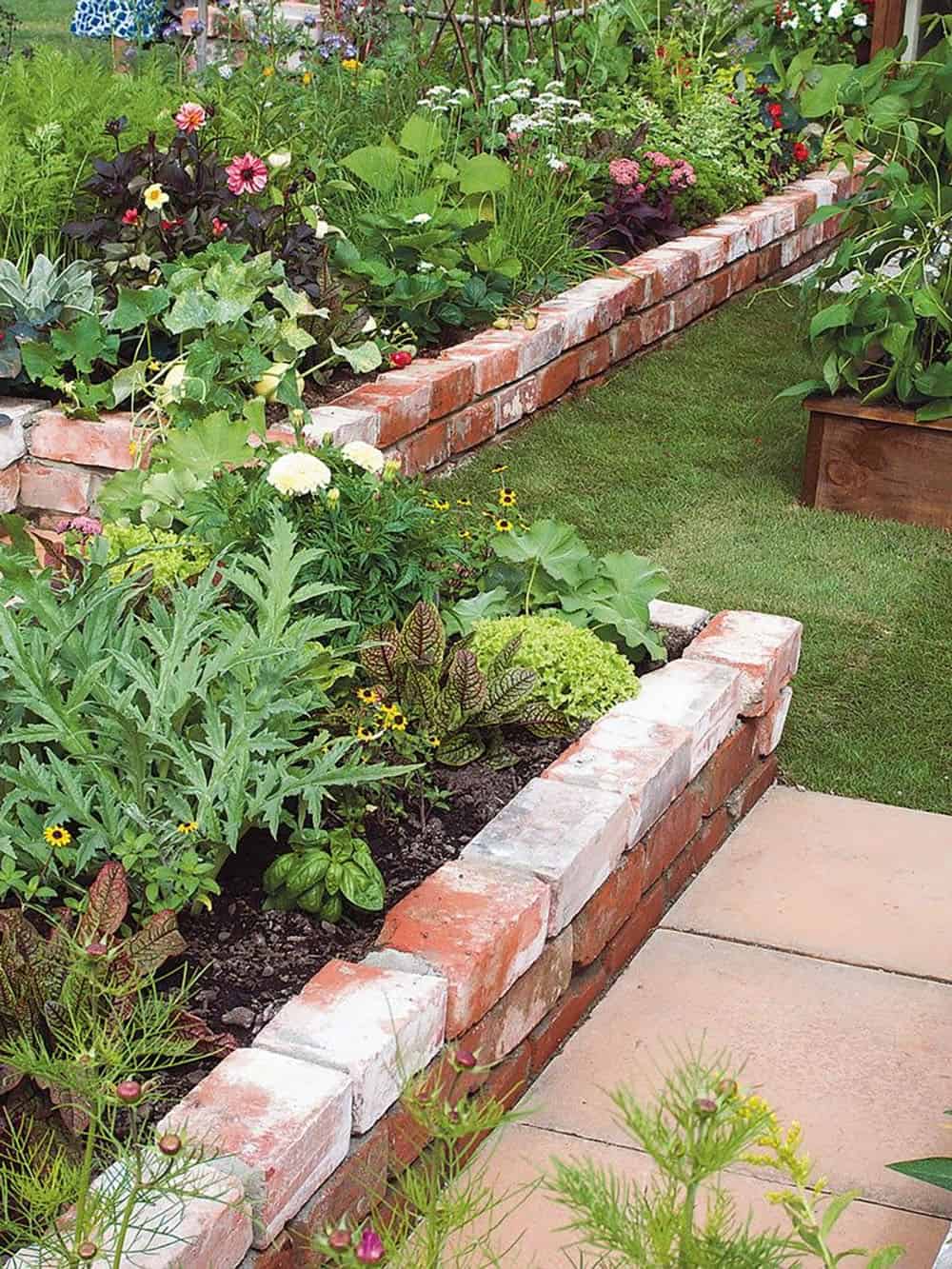
This beautiful border features stacked bricks defining the edge of a garden bed. Stack your bricks for a timeless aesthetic, or you can stack them in a random pattern to complement a chaos garden. An additional benefit of stacking your border is that it will hold your soil and mulch in place when you water your garden bed or when it rains. (via Petra Lorentz / Pinterest)
19. Stacked Brick Edge.
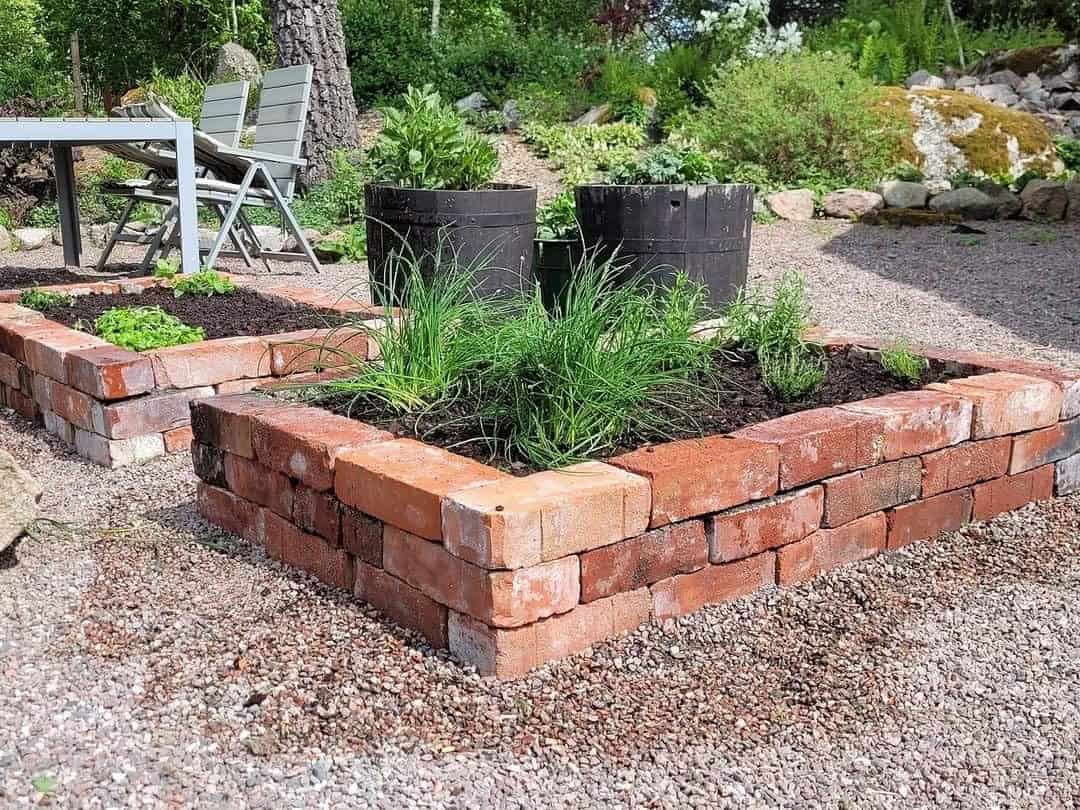
Define your garden beds with stacked red brick. This is an easy way to define your gardens, surrounded by gravel pathways. Grow flowers, vegetables, or herbs in well-draining soil. (via Emma Nilsson / Pinterest)
20. Brick Circle Focal Point.
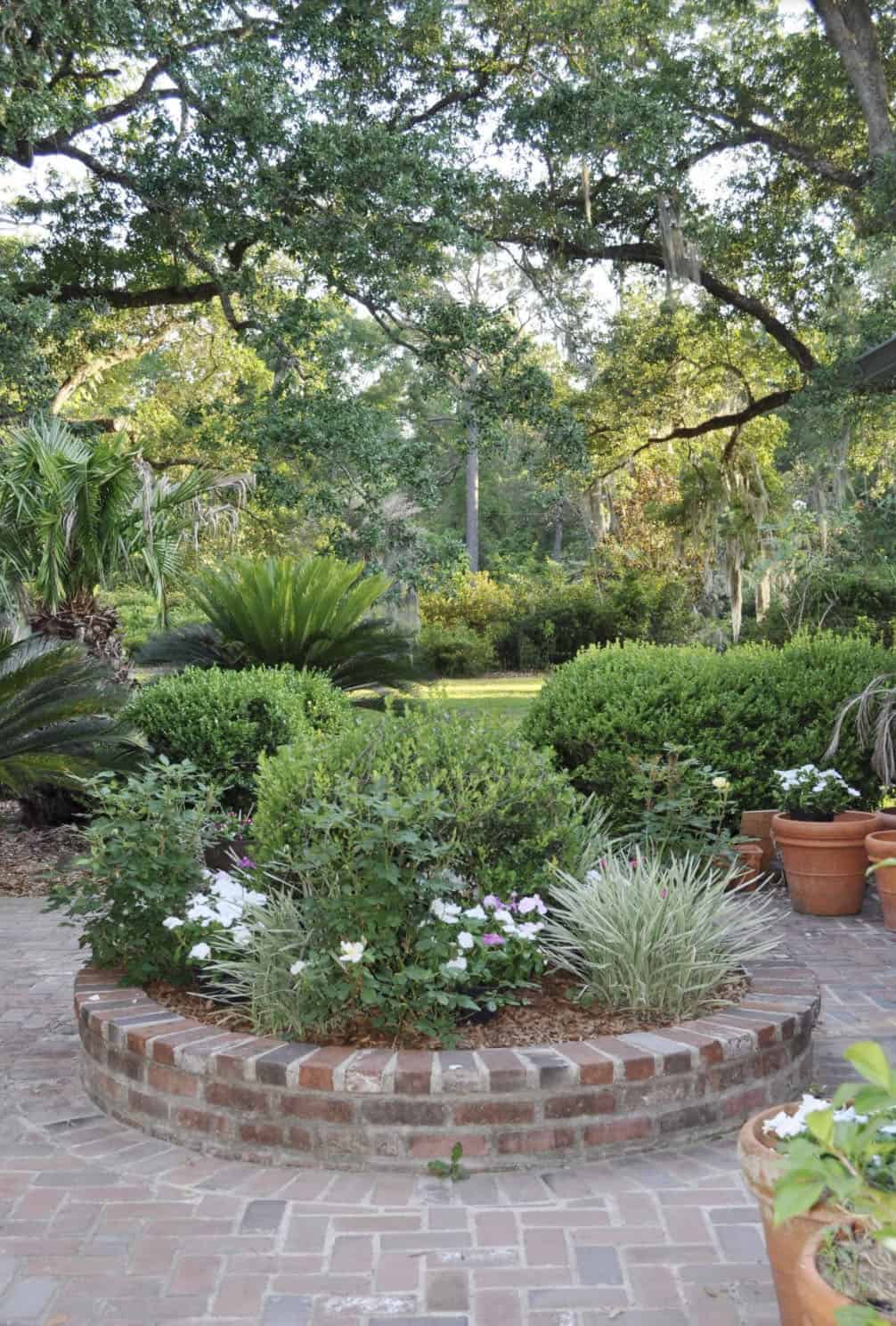
Create a stunning focal point in your backyard garden with a circular brick edge set in mortar. Plant flowers, grasses, and shrubs for variation and visual interest. Layer mulch on top for a finished look that helps retain moisture and suppress weeds. (via LRM Architectural Design)
21. Brick Pathway Garden Edge.
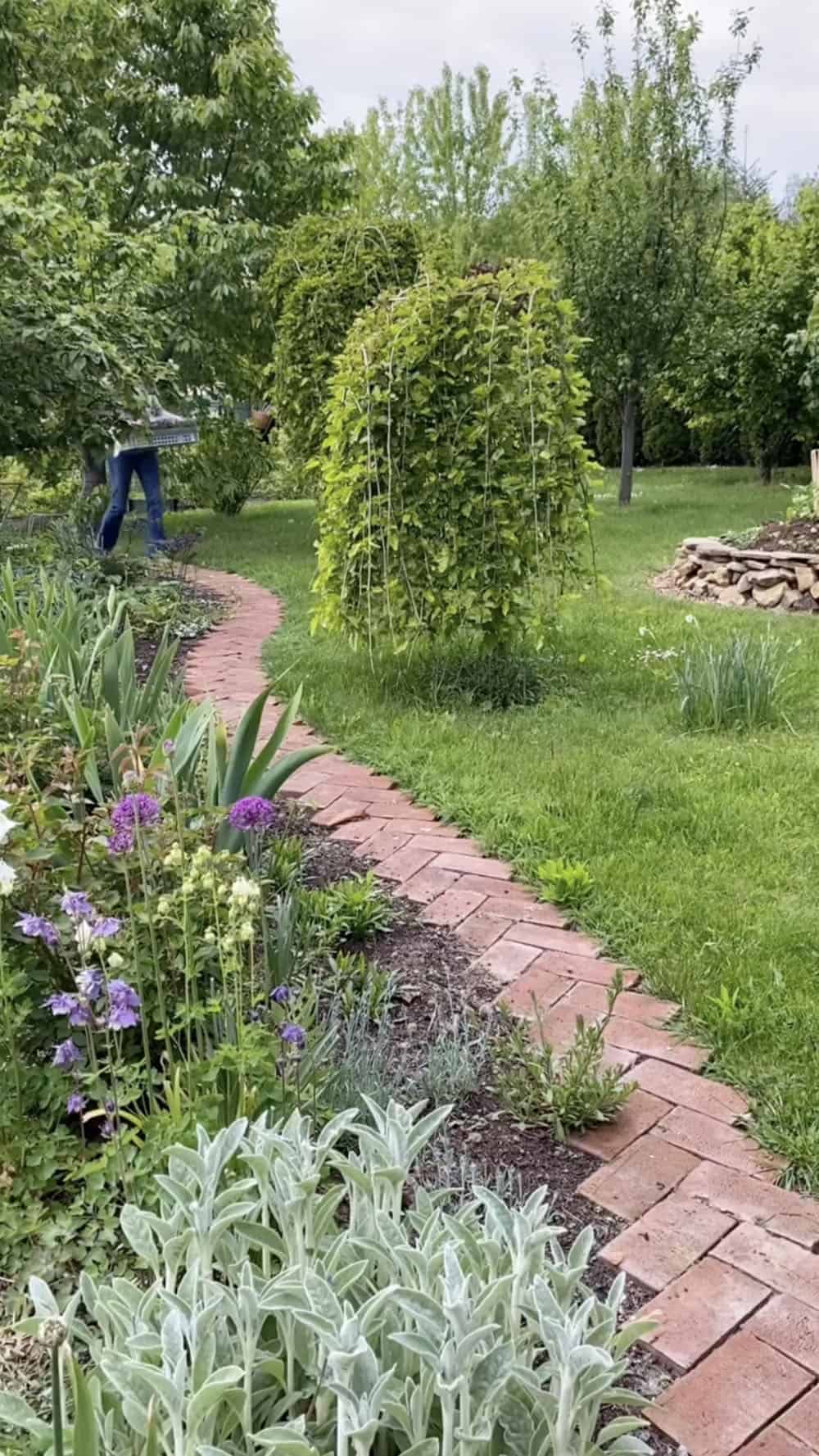
Get creative by framing your garden bed with a zigzag brick pathway. Get the DIY video tutorial at the provided link. (via @garden.goodies.parade / Instagram)
22. Raised Herb Garden.
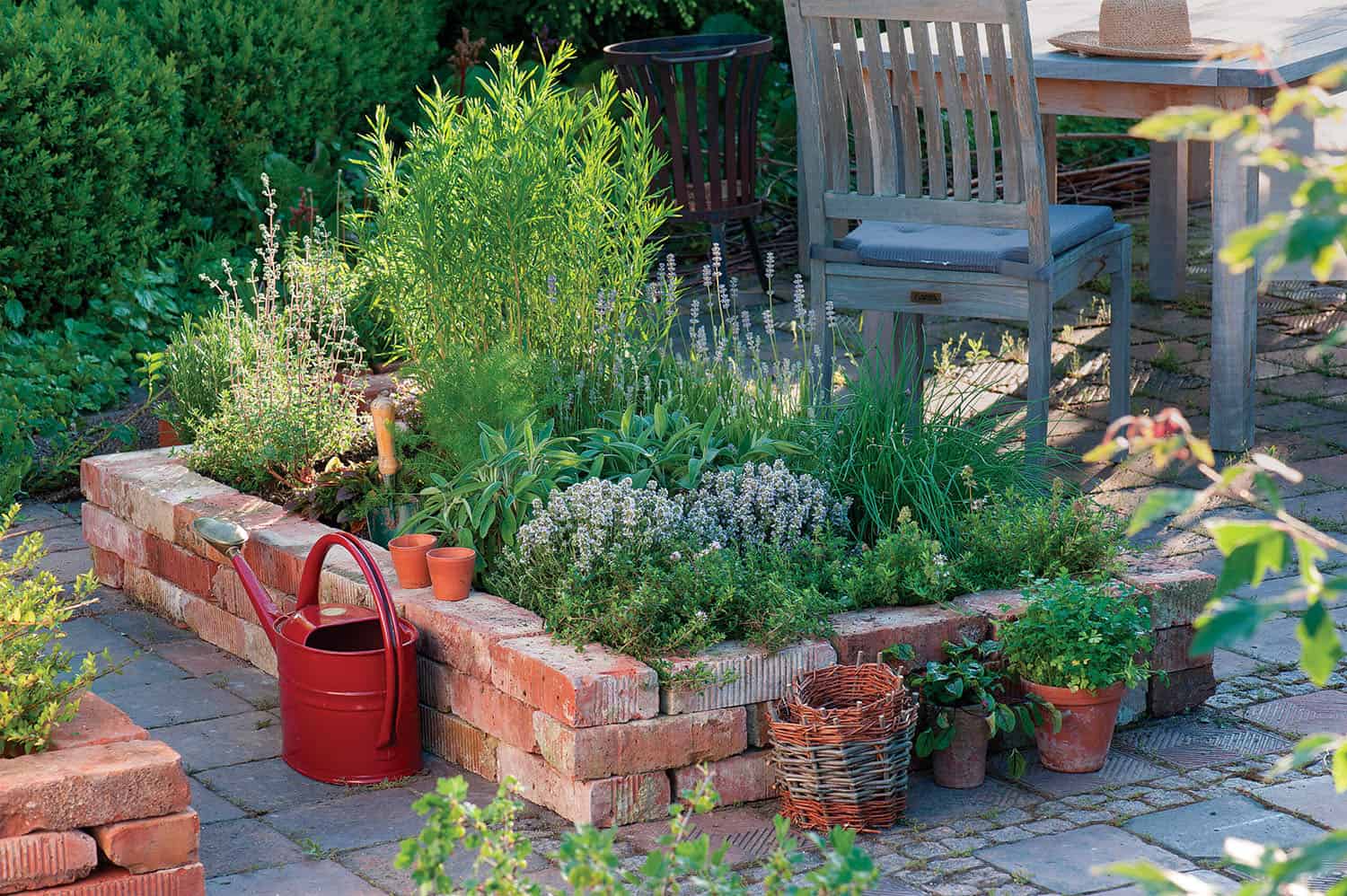
Using bricks for your garden edging is a timeless and effortless choice. This garden bed is simple to construct and lends a traditional, cottage-garden vibe to an herb garden. The contrast between the brick and the paver stone walkway makes the edging stand out. The benefits of a raised bed include improved soil conditions, fewer weeds, less damage from pests, more easily accessible (you won’t have to bend down as far), longer growing season, and increased growing production. (via Fine Gardening)
23. Circular Pressed-In Ground Edging.
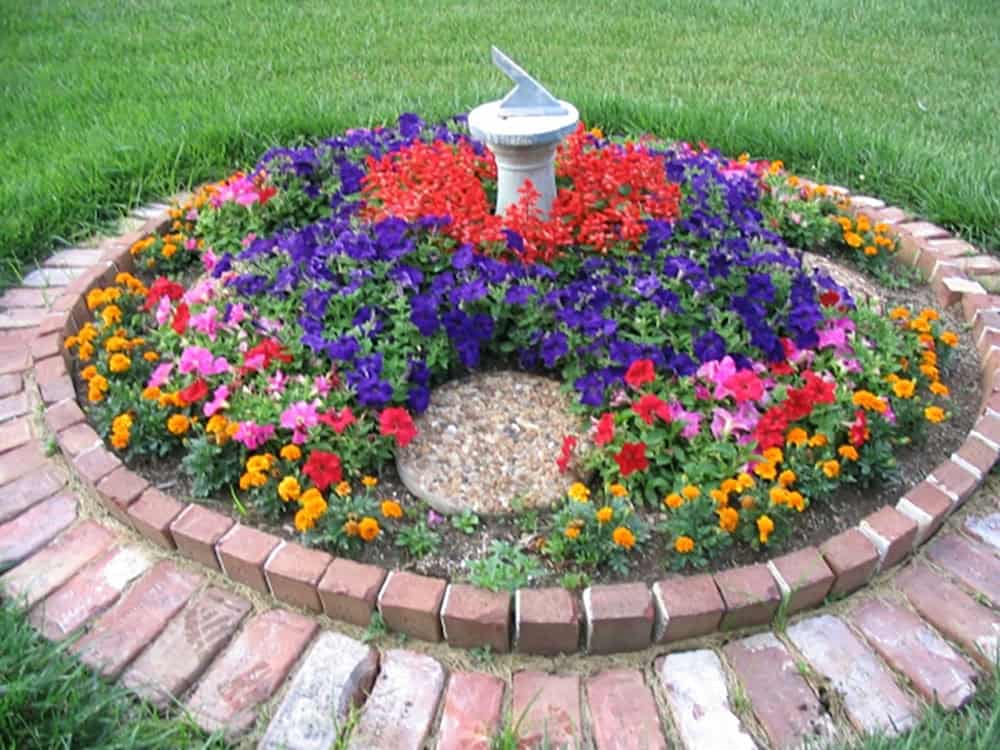
Add a border around your garden bed in a circular pattern, which acts as both a border and part of the garden design. This garden features bricks laid into the ground around a sundial, creating a stunning focal point in the garden. The addition of this brick edging also makes it easier when you mow the lawn. (via Willowridge Landscape)



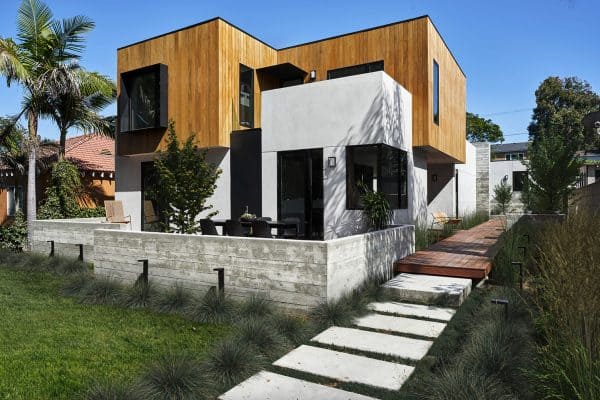

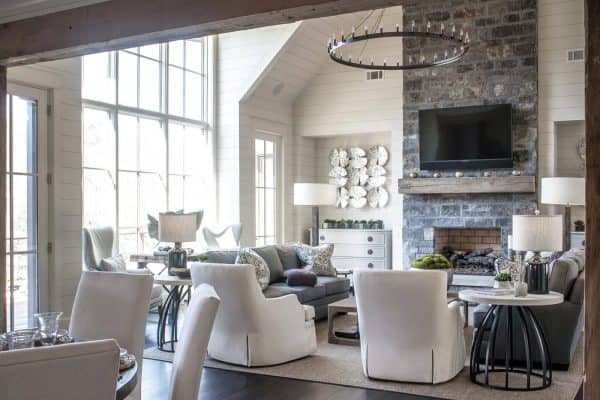

2 comments